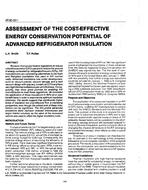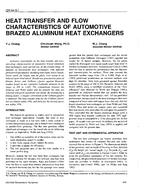Click here to purchase
With buildings known to contribute significantly to the global carbon footprint, it is clear that regions with hot and humid climates need to come up with practical and simple, yet effective solutions that the local construction industry can adopt to provide thermally comfortable interior spaces at reduced, if not zero energy use. Although double skin facades have been shown to be an effective solution to control interior space thermal conditions, its implementation has been checked due to significant increase in capital expenditure as compared to a normal construction and the undesirable reduction in lettable floor area. This project researched into the construction of a ventilated façade using the light block technology that has become commercially available in Mauritius since few years with the benefits of offering a ventilated façade without any additional cost and no additional space requirement. Two geometrically identical prototypes were constructed, one made of conventional block and the other made with light block with a ventilated cavity. The experimental results show definite benefits in having a ventilated wall, with 2-3 ?C drop in interior wall temperature recorded on average and up to 6?C drop in internal wall surface temperature recorded with the proposed ventilated wall construction, in conjunction with a useful reduction in the peak cooling load in the afternoon due to a quicker rate of cooling. Computational fluid dynamics, summertime dynamic and building energy modelling simulations have been carried out to validate the experimental results.
Citation: 4th Intl Conf: Efficient Bldg Design
Product Details
- Published:
- 2020
- Number of Pages:
- 9
- Units of Measure:
- Dual
- File Size:
- 1 file , 1.3 MB
- Product Code(s):
- D-ICEB20-10


